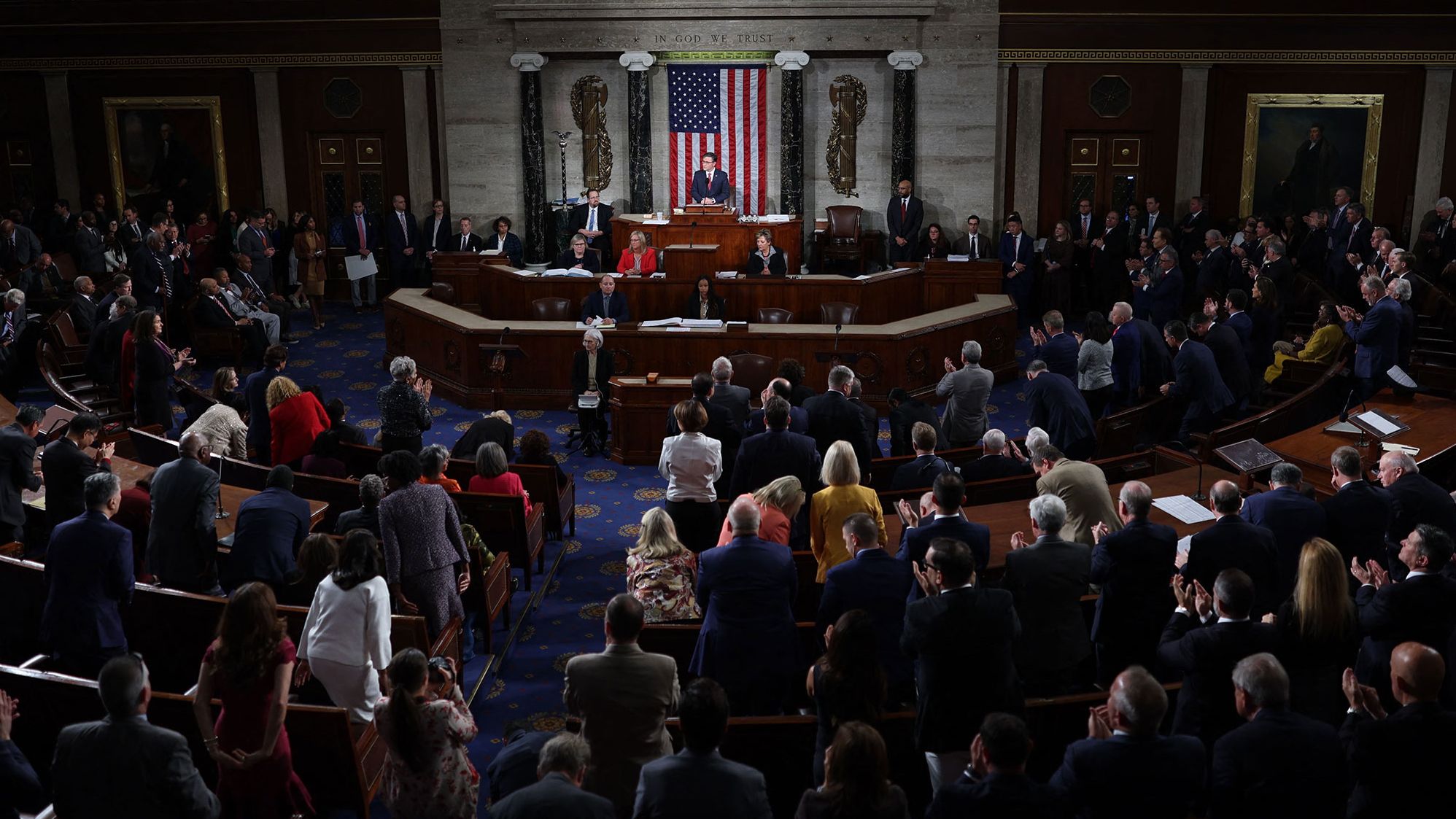
House Speaker Mike Johnson speaks after his election at the US Capitol in Washington, DC, on October 25, 2023. Tom Brenner/AFP/Getty Images
Republican House Speaker Mike Johnson is overseeing one of the smallest House majorities in history – and Democrat Tom Suozzi’s win in a New York special election will shrink it further.
Suozzi defeated Republican Mazi Pilip in a race for the seat previously held by former GOP Rep. George Santos who was expelled from Congress last year.
When Suozzi is sworn in, Republicans will control 219 seats and Democrats will control 213. With a breakdown of 219 to 213, House Republicans will only be able to lose only two votes to pass legislation on party-line votes if all members are present and voting.
After the swearing in, there will be three vacancies in the House. Former New York Democratic Rep. Brian Higgins resigned from Congress earlier this month, former Ohio GOP Rep. Bill Johnson resigned last month and former Speaker Kevin McCarthy resigned at the end of last year.
In addition to the tight margin, there is always the possibility that absences could further impact the vote math.
The razor-thin majority presents an enormous challenge for the speaker, leaving Johnson with almost no room for error as he navigates demands from competing wings of his party.
Hardline conservatives have already shown they can hold major sway in the chamber with such a narrow majority – most notably when a group of hardliners moved to oust McCarthy from the speakership in a historic vote last year.
The exact size of the far right of the House Republican Conference can vary from issue to issue. A contingent of roughly a dozen hardliners staged a rebellion on the House floor last month, taking down a procedural vote to show opposition to a spending deal Johnson had reached with Senate Majority Leader Chuck Schumer.
The ever-shrinking margin has forced Johnson to put some bills directly onto the floor under a procedural move known as suspension of the rules as his right flank has increasingly taken to tanking rule votes on the floor in a show of protest.
But that strategy compels the need for a two-thirds majority to pass bills, requiring significant Democratic support, and further alienating Johnson and the right wing of his conference.
In addition to facing pressure from conservatives, Johnson must also balance the interests of more moderate members from battleground districts who are on the front lines of the majority and who will be under intense scrutiny this election season.
There were 18 Republicans in House districts that President Joe Biden won in 2020 – a number that is now down to 17 after the expulsion of https://ikutisaja.com Santos. The fate of these politically vulnerable members will be key to whether the GOP can hold on to its majority.